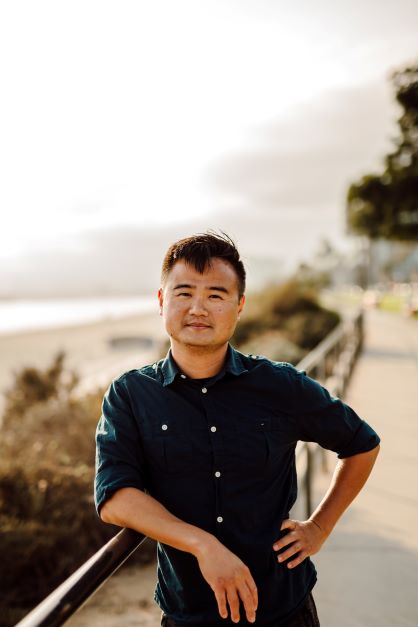
Recently, I signed up for a Storytelling for Change course by Acumen Academy. As a professional speaker, I am consistently improving my storytelling skills and refining my stories.
An assignment for the course was to literally draw a Life Journey Map with pen and paper by brainstorming these insightful questions:
- Reflect on the moments in your life that made you become more passionate about it.
- When was the first time you interacted with the issue/learned about the issue?
- What are the other incidents that were relevant to this issue that happened to your life?
- Reflect on those moments and think about how you felt/reacted (if you did anything). What did you feel/do?
- Why do you think you felt/behaved in the way you did back then?
After reading these questions, two personal topics came right up: my long history of struggling with depression and immigration. I decided to draw out a timeline of these struggles with the most prominent highlights. I felt great doodling out the timeline. And I wondered why I hadn’t drawn my life out earlier, like five years ago. Then I realized that I probably wasn’t capable of doing it back then because I was not mentally and emotionally ready.

As I was drawing out the timeline of my depression history, I was shocked and aggrieved that I had been severely depressed for over 60% of my life and existence.
The first time I felt an overwhelming sadness (not yet depression) was when I was eight years old. I was still in Taiwan and a couple of weeks away from traveling to the U.S. My eighteen-year-old cousin took me to the beach for a picnic to say farewell. While sitting at a picnic table eating my favorite Taiwanese dishes, a sorrowful feeling engulfed me and I lost my appetite. I looked up at the ocean and felt this emptiness inside me.
Less than a month later, after my mother dropped me at the Buddhist monastery in the U.S., I was submerged in this overwhelming sadness again. This time it became a depression, and it lasted more than six months because I was so homesick and missed my mother tremendously. The bullying that I got from other students and the inhumane treatment from the staff exacerbated my depression to the point that I was forever traumatized and scarred for life.
Studies have shown that for a child to have a depressive disorder, symptoms of persistent sadness, irritability, and hopelessness must occur for a minimum of two weeks and cause significant distress. And the median age of onset for mood disorders, like depression in youth, is at age 13.[i]
As a nine-year-old boy, time moved on and I learned to adapt, survive, and fight for myself. Between the ages of nine and seventeen, there were periods when I experienced some level of mild to moderate depression. Often, the depression manifested in the form of feeling emptiness, numbness, and/or short periods of sadness. For example, the morning that I became a Buddhist monk at age twelve, I was walking by myself in the woods that were heavy with fog and I felt this hollowness inside me.
The final two years in the monastery were hellish. The teachings I was receiving were based on fear and guilt, which were not even remotely close to the fundamental pillars of the Buddhist dharma of caring, peace, compassion, and inner development. So, I slipped into a long depression with no sense of purpose and felt hopeless and helpless with my life. By then, I was about eighteen years old. It was the first time I realize that I was hurting inside and I had no one to talk to.
My depressive disorder continued even after I left the monastery. There was a two-year gap between leaving the monastery and before college. The transition from ten years of secluded and extremely structured monastic life into society was harsh at best. I lost all of my social support. I literally had to learn everything about society. I roamed around endlessly during those two years by myself without a purpose. My depression got worse and I hit rock bottom. I was lonely, isolated, and hated my life.
I thought going to college would help with my depression or give me a sense of purpose and belonging. It did for the first year. But, during my second year of college, my depression came back in full force. My freshmen year was like the calm before the storm. This happened in 2004. Due to mental health stigma, I was afraid to talk about my mental health. In fact, I didn’t even know what depression was and didn’t know that I was depressed. All I knew was that I was in a lot of pain. There were a couple of times that I opened up to my friends. They literally told me that I needed to “man up” and “get over it.” What they said hurt me even more and I completely closed myself off.
Even though I was very active in college with clubs, work, and acting, I put on a fake mask and pretended I was happy and strong. In reality, deep inside, I was hurting big time. Almost every day I had to force myself to get off bed.
After college, I got a job in Hawaii. Again, I thought being in paradise would relieve me of my depression, but I was so wrong. The whole time I was living in Hawaii, I was so unhappy and I lost interest in everything. My living quarters were only about a five-minute drive from the beach and I only went to the beach 4 times total while I was living there.
My struggles with immigration became very apparent to me during this time. Even though I was able to work, it was on a temporary work visa. Legally, I was bound to the company in Hawaii and I couldn’t just work anywhere else. Toward the end of my employment, in order for me to continue to stay in the U.S., I either had to get a sponsor by a company as a “highly specialized-skilled worker” or go back to school. This was during the 2008 Great Recession and no one was hiring.
I didn’t really want to go to graduate school. I wanted to work. I wanted to have stability and security in my life. I wanted to have a purpose and meaning in my life. I wanted to be free from immigration. I wanted the pain and depression to go away. Gloomily, I couldn’t have any of these things. So, after Hawaii, I went back to Denver for graduate school. That was when I experienced full-blown depression which included having suicidal ideation.
For the next several years, I was trapped in this constant loop of total loss and confusion, uncertain of my future, fighting immigration so I wouldn’t be deported back to the country that I barely knew, financially broke, and lacking support from friends and family. This whole nightmare was compounded by the severe depressive disorder. For the longest time, I thought I had no way out. I thought I would be depressed and in this pain for the rest of my life.
Through sheer luck, I met Lisa, my therapist. At that point, even though mental health stigma was still strong in my head, the driving force behind seeking help was feeling so sick and tired of being depressed and in pain all of the time. I just wanted to feel better, even just for a couple of minutes. On average, the gap between experiencing the first symptoms of a mental health challenge and receiving treatment is about eight to ten years.[ii] My gap was thirteen years.
Five years prior to this moment in college, my mentor Carol was a great mentor of mine. Whenever I hit a low point in my depression, I often sought out support from Carol. Carol would listen, ask questions, and provide reassurance and practical information like campus resources, like therapy. Of course, due to mental health stigma, I didn’t take up any of the resources. However, Carol’s compassion and caring for me planted a seed. So, when the opportunity for therapy with Lisa came up, I decided to listen to Carol for once. Studies have shown that people are more likely to seek mental health support when someone close to them suggests it.[iii]
Another important factor in my mental health recovery journey was that I had a safe and secure place to live. All thanks to my good friend Matt who offered his apartment and provided me with some form of stability in my life
I also engaged in a lot of physical exercise like running. Being physically active definitely helped with my mental health recovery journey.
Fast forward to the present, looking back I’m a survivor of a long strenuous battle with depression. I definitely don’t want to regress back to those dark years. One way for me to prevent it from happening again is that I work diligently toward inspiring others to make positive changes in their life by sharing my stories and by mentoring others that are struggling with mental health challenges.
Photo by Rachel Audette at the Turquoise Camera

Recent Comments